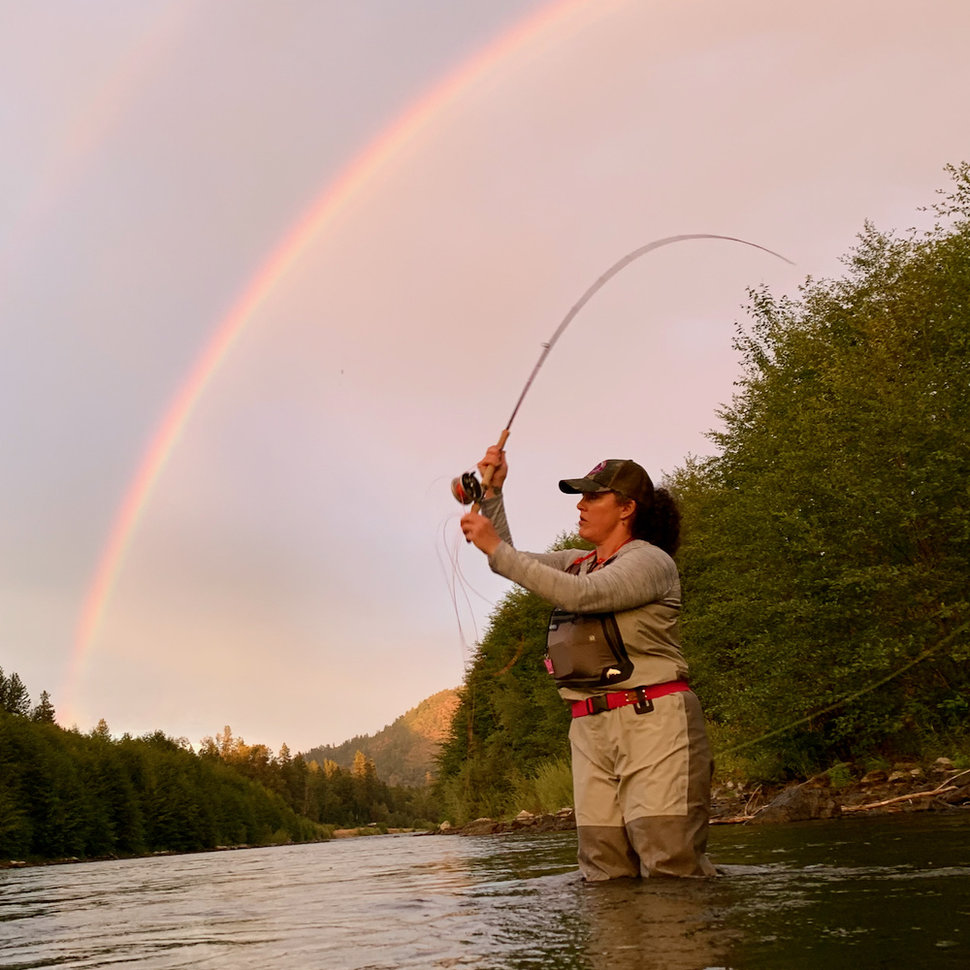Practice Makes Perfect

A common inquiry I receive is “Where is a good place to practice river right?”. I like Barton Park($6 entry at the gate) and the water just up from the boat launch, where you can also park your car, be close to restroom facilities as well as experience some excellent birdwatching. While this run up river within walking distance can be decent water to fish, conditions are not great for steelhead right now, but it’s still a great place to practice. You’ll be able to use your right or left hand on top of the rod and practice double spey as your downstream anchor cast as well as a snap C (aka Circle Spey) within upstream anchor placement. The trick with any great cast, one that is safe from any interference that might give you an unwanted piercing, is to know at all times exactly where your anchor-the end of the fly line- is placed on the water and how it is traveling through the air with proper alignment.
River Right: Sustained Anchor Casts
With Snap C, aka Circle Spey, your line falls below your right shoulder to start. Then lift straight up with a Scandi line (a summer, floating line which you have) to perform the circle up and under, start and stop the circle at the same place on the water surface to eliminate slack in the line. The action of the up and under circle places your anchor from the downstream right quadrant to the upstream left quadrant, ideally landing at the 10 o’clock position when river right. Then sweep your arms to “key” position, the firing position that forms a triangle, with that lower leg of the triangle being parallel to the water surface. Execute your forward stroke relatively quickly, as the faster-moving current will move your anchor within a rod length away from you, and if that anchor gets too close to your leg, it could hit you. Thus, at this stage of learning, it’s best to execute the downstream anchor cast found in double Spey or seek out slow-moving water to practice this cast. As you advance, single spay often becomes your upstream anchor cast.
Double Spey:
Double Spey is a downstream anchor cast because the anchor starts in your downstream quadrant and remains there throughout the cast. As one advances, snake roll is usually the choice cast downstream cast here. Remember, let the line fall below your right shoulder to begin. Gently lift your rod tip across your body until it touches the water in your left quadrant to lay the line out in front of you as this motion places in your anchor at 2 o’clock. Sweep to “key” position and shoot your line across the river. You are aiming straight across from you and quartered down slightly.
Common “touch and go” casts for more advanced fisher folks will be the Snake Roll and Single Spey. All of your spey casts can be executed with a single hand rod and add a desirable fun factor of variety and line speed to your regular overhead or standard roll casts.
I hope the notes provided here help give you a bit of good for thought. If I can assist you in person with your angling needs, don’t hesitate to reach out. Spey and single hand lessons, as well as on the water “walk and wade” classes for river right and left, are custom-tailored to suit all your needs Tuesday-Saturday throughout the summer months.




